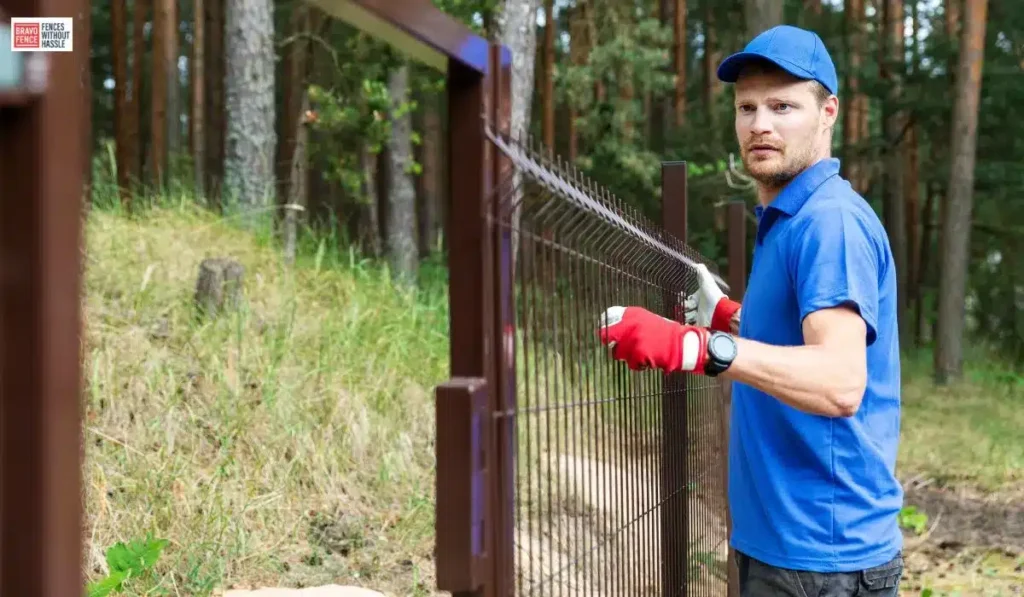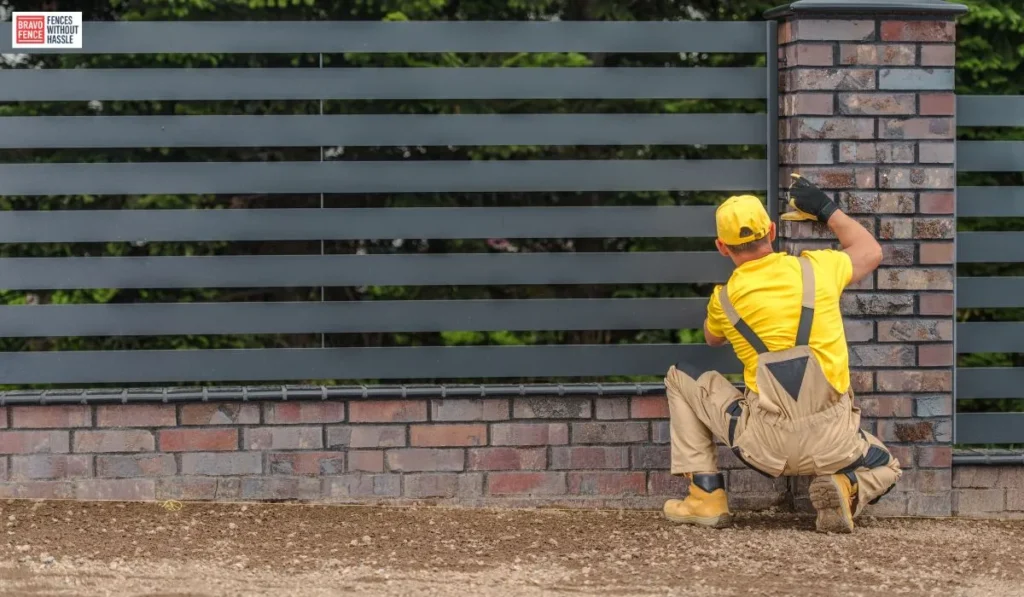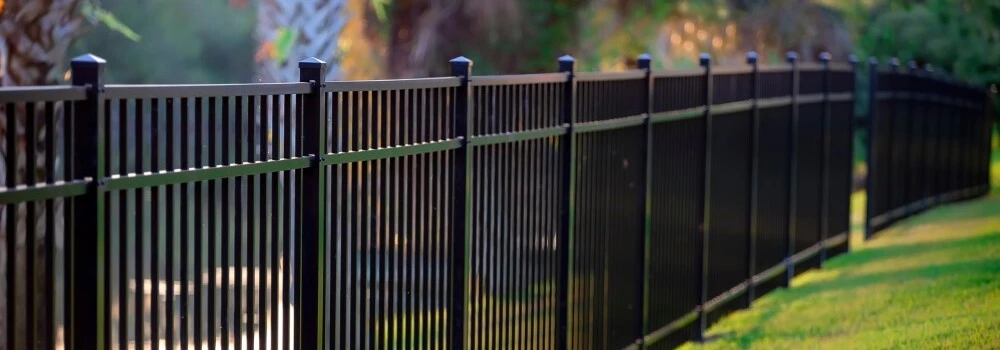
Can You Install a Fence in Winter? Benefits of Off-Season Setup
Most people think of winter as snow, crackling fires, and a warm, steaming mug.
But it can also be an excellent time for renovation projects.
Ever wonder if you can actually do fencing installation during the cold season?
Therefore, most of the homeowners in most regions avoid Installing a Fence in Winter.
But, there is more to off-season projects than one would initially think.
Given some preparation and knowledge, winter might just become your favourite time for installing a long-desired fence.
Let’s break down why this cold season turns out to be a great time for erecting fences and how you can gain from acting now instead of when spring or summer arrives.
Understanding Fence Installation in Cold Weather
Cold weather means other conditions when installing fences.
The ground can freeze and even get wetly saturated.
It affects the digging of post holes because it may require additional tools or methods for stability.
Cold temperatures will also affect materials used, such as wood and vinyl.
For instance, in freezing temperatures, wooden materials become brittle.
The possibility of cracking at installation time might increase.
These materials should be handled carefully during the project.
Many fences are constructed with winter use in mind.
Such metals and some composite materials do well when the weather is cold.
The ability of the various materials to cope determines a homeowner’s decision to pick the best and achieve a durable result that withstands seasonal changes quite well.
Advantages of Installing a Fence in Winter

Cost Savings: Off-Season Discounts
Installing a fence during winter would save a lot of money.
Many contractors offer off-season discounts as demand declines during the cold months.
This way, you can get lower rates than during peak seasons.
More importantly, materials may be cheaper during winter.
Suppliers are usually left with excess inventory, which they would dispose of before spring.
You may get your fencing materials at a cheaper price during winter than when high demand is anticipated.
Not only do seasonal price reductions save money, but they also allow better allocation of your budget towards higher-quality materials or additional features.
Invest wisely during the quieter season and make the best of functions and aesthetics with your boundary line without breaking the bank.
Less Disruption: Quieter Season
Winter is usually the least hectic time of the year for most contractors.
This implies that your fencing installation can occur with minimal disturbances.
With fewer tasks on their agenda, crews often have ample time to devote themselves to your needs.
It also allows for a smoother process because of the reduced hustle and bustle of warmer months.
You won’t have to worry about competing schedules or overlapping projects.
This focused attention can lead to better craftsmanship as the installers are less rushed.
You might also experience the neighbourhood during winter to be normally quieter.
Fewer footsteps around your place ensure a peaceful space, especially while working.
The integration of these factors thus makes for an ideal environment through which your fencing work will be completed promptly.
Shorter Installation Time
Winter sometimes brings in some benefits no one considers, especially when fencing is used.
Ground conditions may favour those who consider installing their fences; frozen earth is easier to dig into compared to muddy and saturated soil that other seasons bring in.
The groundsman would easily set posts and do groundwork.
Less vegetation also quickens the process.
Clear of overgrown plants or shrubs, crews can race through the landscape, causing very little interruption and delay.
Also, with much fewer projects to tie up during winter seasons, contractors will have continuous time to concentrate wholly on your fence installation.
Such focus and availability contribute considerably toward reducing overall project timelines with quality artistry.
Availability of Contractors
Most of the time, in winter, there are very few projects, and hence, the availability is relatively higher.
Many homeowners opt for spring and summer seasons and thus keep their schedule generally wide open during winter.
That is the period when you can get a good contractor who is free to give you his undivided attention to get your fences installed.
Besides this, you can also enjoy more flexible timelines and project scope because of reduced competition for services among contractors.
They can work according to your needs without the usual pressure of working in a peak season.
Committed and serious effort and artistry on every assignment are guaranteed, too, since some seasoned fence installers welcome winter jobs since their workforce will be kept busy during the slower months.
Challenges of Winter Fence Installation
Winter fence installation indeed has its share of challenges.
Frozen ground and icy soil can make digging post holes quite a task, to mention a few.
It makes the whole process slower because they may have to employ specialized tools or methods in order to break through iced soil.
Another issue has to do with the accumulation of snow and ice.
Snow can cover property lines, so it isn’t easy to mark the fence in inaccurate directions.
It can also pose hazards for equipment and labourers as ice forms around your yard.
Secondly, fewer daylight hours in winter translates to a reduced working day.
Additionally, more limited visibility and colder conditions make proper planning key to an installation schedule during the winter season.
All these require additional considerations from contractors and homeowners before embarking on fencing installation in the winter months.
How to Prepare for Fence Installation in Winter
Preparing for fence installation during winter requires an extra set of steps to succeed.
First, monitor the weather forecast closely.
Do not schedule installation during times of heavy snowfalls or extreme cold because these conditions would hamper progress and affect the materials.
Clean up the area where the fence is to be installed.
Remove all snow, ice, or other debris that may affect work.
This will benefit the contractors and also ensure accurate measurement and placement.
For colder temperatures, consider using pressure-treated wood or vinyl fencing materials that are specifically designed to withstand freezing temperatures.
These options are less likely to warp or crack in extremely frigid conditions.
Preparation is key to a better installation of your fencing project and fewer bumps on the road.
What Type of Fencing Works Best in Winter
Some materials perform better in winter when it comes to fencing installation.
Vinyl and composite fences are good because they are also strong and cold-resistant.
They do not easily warp or crack, making them suitable for harsh weather conditions.
Wood can be used but needs careful selection.
The best of the lot will be pressure-treated options that can resist moisture and decay.
This often means more maintenance when it gets chilly.
Metal fencings, such as chain-link or aluminium, are also a viable option.
These materials withstand freezing temperatures well without compromising structural integrity.
Regardless of your choice, ensure proper installation techniques are followed to enhance longevity in winter environments.
Expert Tips for Successful Winter Fence Installation
Timing is everything when it comes to planning your winter fence installation.
Opt for a day when the temperatures are above freezing and the ground isn’t frozen solid; digging post holes will become that much easier, and materials will adhere better to each other.
Prepare yourself with the right tools before proceeding.
Battery drain is rapid in cold weather, so prepare some spare batteries to allow you to continue working during power tool usage.
Insulated gloves also help keep your talent at work, especially in icy conditions.
Monitor weather forecasts closely.
Sudden snowfalls or extreme colds can disrupt your plans unexpectedly.
Be prepared to adjust your schedule as needed to ensure a smooth installation process without compromising quality or safety.
Conclusion
Actually, installing a fence during the winter is possible and quite fruitful for homeowners.
In fact, the cold weather brings some special opportunities that might come in handy for your fencing project.
While many contractors have more free time during these months, you might book the installation on your preferred dates.
Additionally, off-season discounts are often available, making it a cost-effective choice.
With fewer projects on their plates, contractors can focus on your installation and complete the work efficiently.
Winter installations may come with challenges, but they’re manageable with the right preparation and materials.
Embracing this season for fencing installation could lead to a successful outcome while adding value to your property.
FAQs
Do you really install a fence in winter?
Yes, you can—and with significant benefits. Many homeowners never want to install a fence during the winter. But with proper preparation, things could become different.
What are the main benefits of off-season installation?
Cost savings through discounts is a significant factor. Additionally, you’ll face less disruption due to fewer outdoor projects happening in your neighborhood. Faster installation times and greater availability of contractors also make winter an appealing option.
Is there a particular fencing type that does well in cold weather?
Different materials will take to lower temperatures better than others. Vinyl and metal fences tend to do well in low temperatures, while wooden fences can sometimes need extra care.
What are the potential difficulties that come with winter installations?
Frozen earth can be challenging when digging holes for the fence posts. Snow cover or ice can also limit access to your residence or obscure vision.
Tags: Complete Guide to Home Improvement Savings, Complete Guide to Winter Home Improvement, Everything You Need to Know About Outdoor Renovations, Explore Helpful Resources on Winter Landscaping Ideas, Inspiration and Tips on Winter Fence Installation

